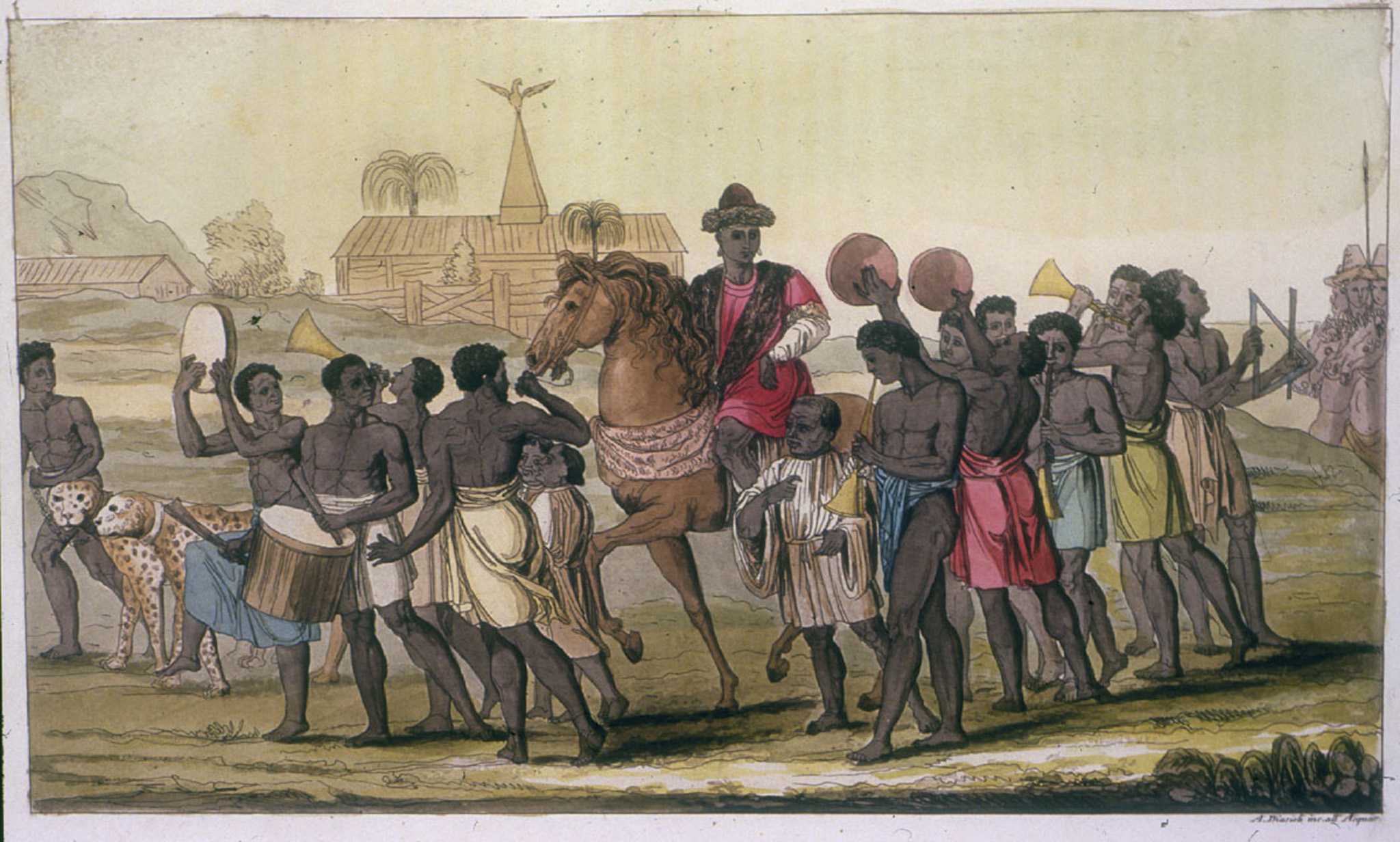Chapter 1
Slavery & the Emerging Global Economy
In the 15th century, people did not see themselves as Africans or Europeans. They saw themselves aligned with certain cultural groups and regions. People in the western African region were leaders and everyday men and women with intellect, culture, power and a sense of community. While people in the western European region sought new opportunities to expand their global power as they recovered from challenges including religious warfare, pandemic conditions and famine. They engaged in global trade, diplomacy, and cultural exchange. In the 1440s western Europe and western Africa were no longer limited by overland trade, and they connected along the Atlantic coast which opened new trade relations.
Eventually, the Western Atlantic became a site for colonization with fertile land to cultivate sugar, the driver of the transatlantic slave trade. The demand for profit and power came with a human cost. At the heart of the tension were the lives of enslaved African men, women and children and the moral degradation of enslavers and those who benefited from trade, both directly and indirectly.
Africa and the Emerging Global Economy
In the 1400s, Africans did not see themselves as African. The continent included many city- and nation-states, and like Europe, it was made up of diverse societies. The people of one region might have had little in common with their neighbors. The majority of enslaved Africans came from along the western coast. These regions were known for their centers of learning, military prowess, vast empires, and diverse faiths. They traded with societies as far away as Asia and Europe.
Most of the African people who were subjected to forced migration to North America came from western Africa. Some of these regions include Senegambia (22%), Gold Coast (12%), Bight of Benin (3%), Bight of Biafra (17%), and West Central Africa (27%). Other peoples transported in the broader Transatlantic Slave Trade came from Sierra Leone (11%), the Windward Coast (6%), and Southeast Africa (2%).
16th-century map of Africa
Western Central Africa
Ivory Signal Horn
Bakongo monarchs used precious materials such as ivory to display their empire’s wealth and power. Throughout Africa, Asia, and Europe, the Bakongo were respected for their control of rare commodities and rich natural resources. Their system of centralized authority made them superior trading partners and negotiators. But their wealth attracted constant challenges from their rivals, both European and African. Over 27 percent of enslaved Africans sold to North America were traded through ports along the west central coastline.
The City of Loango
The Bight of Benin
Procession of the King of Benin
One of the most powerful nations along the western coast of Africa, the Benin Kingdom controlled the Niger River that flowed deep into the interior of the continent. Their organized military force included men and women warriors.
Benin warriors wore small bells on their chests, as can be seen on the plaques that formerly covered the piers in the palace courtyard. The sound of the bells identified Benin warriors in battle, served as a sign of the spiritual protection of the king, and spread terror among the enemy. Ruled by a strong centralized government, the kingdom announced its power, wealth, and majesty with striking bronze sculptures that adorned the houses of nobility.
Diving for Gold Nuggets
Gold Coast
Asante Gold Pectoral Disc
Peoples along the Gold Coast were collectively known as the Akan and included the Asante, Fante, Baoule, and Akwamu. They shared some cultural beliefs and practices and competed to control the gold trade. Across western Africa they were known as master craftsmen and skilled agriculturalists. A common belief among these Gold Coast cultures was that no individual survived alone. For them, unity with their people represented wholeness.
Senegambia
Wolof community members in Senegambia
Nomoli Figurine, Sierra Leone
People forced into slavery from the Senegambia region made up the majority of African Muslims in North America. As many African empires competed over the region, they used religion to institute control. The diverse people of Senegambia developed traditions of cultural adaptation and various forms of resistance—qualities for which the enslaved from the region were known.
The Bight of Biafra
Female Figure with Child
People from the Bight of Biafra represented nearly one-quarter of all the enslaved forcibly taken to North America. Among them were the Igbo captured from the hinterland. Fiercely democratic, Igbo culture was marked by independence, decentralized government, and strong traditions in ironwork and agriculture. During the Transatlantic Slave Trade and its aftermath the Igbo gained a reputation for preferring death to enslavement. They flew home by committing suicide to join their ancestors in the land of their birth.
Community in Biafra
Today, the land I am talking of is the Gambia but yesterday it was not the Gambia. They used to say the ruler of Wuli, the ruler of Niani, . . .
Each ruler had his area. They knew about each other but they governed independently.
Al Haji Bakoyo Suso
